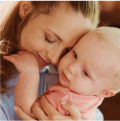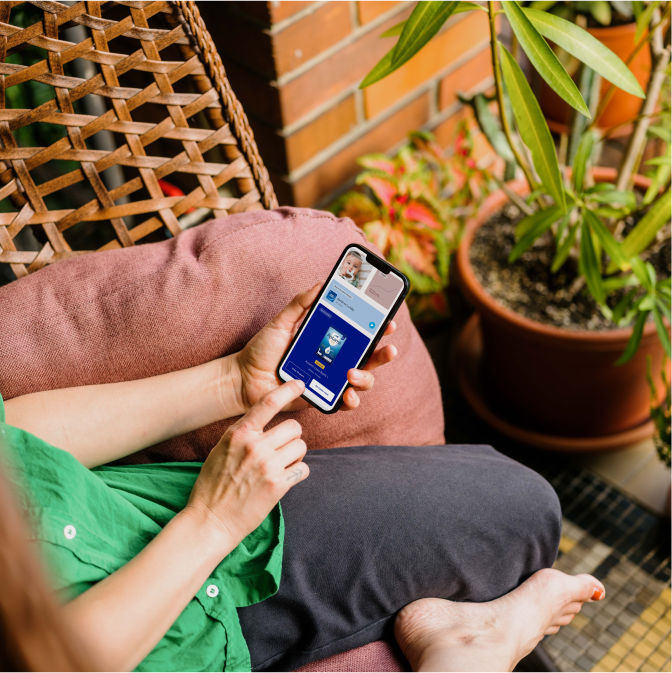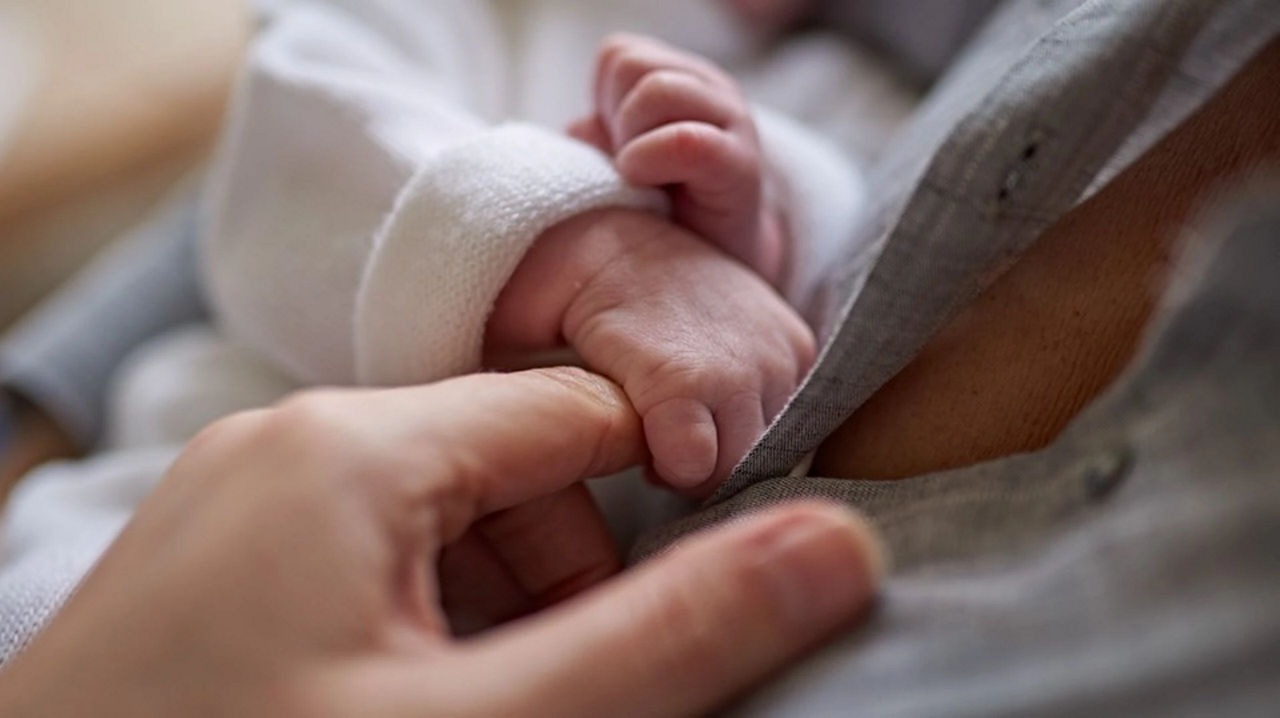How to bathe and wash a newborn
Your guide to washing a newborn
Your newborn’s skin is very delicate. While your baby’s fragile immune system does need to be protected from excessive bacteria, over-cleaning can remove the natural oils. That’s why there’s no need to bathe your baby every day in the first few weeks. After that, if your baby enjoys bath-time, it could become part of their bedtime routine, and give you the perfect opportunity to bond.

Caring for baby-soft skin
Babies are born with a unique moisturising layer called ‘vernix’, which protects their sensitive skin as it acclimatises to its new environment. This protective layer should be left on as long as possible. A daily ‘top and tail’ with clean water is all they need to stay fresh, but you may wish to alternate with bathing your baby every couple of days.
How to top and tail a baby
You'll need:
- A changing mat
- Cotton wool balls or cotton pads.
- Cooled boiled water in a container. (Always check the temperature of the water, lukewarm or room temperature is ideal.)
- A towel (hooded ones are handy).
- A clean nappy.
- A change of clothes.
To wash1:
- Make sure the room is nice and warm before you undress your baby. Aim for around 24°C.
- Lay your baby on the changing mat.
- Undress them but leave their nappy on.
- Wrap them in the hooded towel to keep them warm.
- Dip a cotton wool ball into the water and gently wipe your baby's closed eyes from the nose outwards.
- Use a clean ball on the other eye so as not to spread any infection.
- Clean around the ears, avoiding the ear canal, with a clean cotton ball.
- Now wash their face and neck with a cotton wool ball or soft washcloth. Start from the middle and work outwards.
- Change the nappy, using our guide. Make sure you clean inside the folds of skin (wipe girls from front to back) and dry thoroughly before putting on a clean nappy.
- Work your way down the legs to the feet.
- Check their fingernails and toenails to see if they need clipping. If so, use baby nail clippers and a smooth emery board to soften any jagged edges.
- When finished, dress your baby in their clean clothes and give them a cuddle to calm them, and make up for any drop in temperature.
“Ideally, have your partner or family member with you for support – and to take pictures!”
Umbilical cord care
Where possible, try to keep your newborn baby’s umbilical cord stump dry. The cord stump will drop off naturally after a couple of weeks but until then keep the top of the nappy folded down, away from the cord, to avoid rubbing.
How to bathe a newborn
Some new babies love bath time, while others need a bit of persuading. Try to pick a time when your baby is well fed and not overtired. In the future this could become a calming part of their bedtime routine. At this stage you still don’t need soap or bubble bath, but if you do want to use them, a little un-perfumed soap or bubble bath can be used (only for babies aged 6 weeks plus, if they’re younger, use water only).
- Make sure the room is warm – 24°C is ideal.
- Always run the bath before undressing your baby and never top up a bath with the baby in it. Run the water to a depth of 8–10cm.
- Always check the temperature of the water before you put your baby into it. It should be no hotter than 37-38°C. Use a bath thermometer or your elbow to check the temperature. If you use your elbow, the water should feel slightly warm – around body temperature.
- Use one hand to top and tail your baby, while securely supporting them with the other.
- Their bath should take no longer than 10 minutes.
- Bath chairs and rubber mats are handy to prevent slipping and sliding, but they are not designed to be used without supervision.
- Lift your baby carefully out of the bath and wrap them in a towel.
- Get them warm, dry and dressed.
Never ever leave your baby unattended in a bath, even for a minute3.
Baby massage
A gentle massage is a great way to bond with your baby, increasing their sense of security, improving circulation and easing minor pains4. Your touch will trigger hormones such as oxytocin (the ‘love hormone’), which will help to settle your baby4. Skin contact also passes on bacteria, building up their immunity. Use a baby-friendly massage oil (only for babies 1 month plus) to gently rub your baby’s tummy and limbs, while maintaining eye contact. Most babies find a massage quite relaxing, so it’s better to do it at bedtime, but if they don’t enjoy it or they fall asleep, it’s time to stop.
Next steps
- Eye contact, talking and singing to your baby during a wash or bath will help them to feel reassured.
- Bending and lifting can be painful after labour, so ask your partner to help with baths. It’s a great bonding experience for them too.
- Confidence comes with practice, but it’s reassuring to enlist help with the first few baths at least.
- Ask a family member or friend to film or photograph your baby’s first bath. Your newborn’s surprised reaction will be priceless.
related articles
Learn more about your baby

Need some help?
You can get quick answers to common questions in our FAQs.
Alternatively, if you need help with general pregnancy or baby advice, or maybe on using or ordering our products - our expert team are always on hand to talk about feeding your baby.
About the article
- NHS. How do I bath my baby? [Online]. 2017. Available at: http://www.nhs.uk/Video/Pages/how-do-i-bath-my-baby.aspx[Accessed March 2017]
- NHS. Washing and bathing your baby [Online]. 2015. Available at: http://www.nhs.uk/Conditions/pregnancy-and-baby/Pages/washing-your-baby.aspx [Accessed March 2017]
- Public Health England. Reducing unintentional injuries among children and young people. Crown copyright, June, 2014.
- NCT. Baby massage tips and benefits [Online]. 2016. Available at: https://www.nct.org.uk/parenting/babymassage [Accessed March 2017]
Last reviewed: 06th July 2020
Reviewed by Nutricia’s Medical and Scientific Affairs Team


